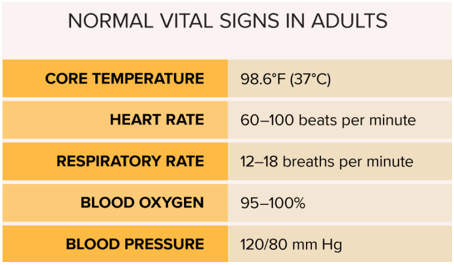The practical nurse (PN) finds a postoperative client lying in bed with an unsecured surgical dressing as seen in the picture. After reinforcing the dressing, which follow-up assessment is most important for the PN to implement?
Vital sign measurement.
Fluid volume intake and output.
Volume of peripheral pulses.
Incisional pain scale rating.
The Correct Answer is A
This is the most important follow-up assessment for the PN to implement because it can detect signs of bleeding, infection, or shock that may result from the unsecured surgical dressing. The PN should monitor the client's blood pressure, pulse, temperature, and respiratory rate and report any abnormal changes.

Nursing Test Bank
Naxlex Comprehensive Predictor Exams
Related Questions
Correct Answer is D
Explanation
This comment shows empathy, respect, and support for the client, without being intrusive or judgmental. The PN acknowledges the client's feelings and offers companionship, which can help reduce isolation and loneliness.
The other options are not correct because:
A. This comment may be perceived as coercive or dismissive of the client's feelings, as it tries to persuade the client to do something he does not want to do or enjoy.
B. This comment may be perceived as accusatory or interrogatory, as it questions the client's decision or motive for staying in his room.
C. This comment may be perceived as minimizing or invalidating the client's feelings, as it implies that the client should not be sad or that his family is doing enough for him.
Correct Answer is A,B,D,C
Explanation
= The correct sequence is: A. Perform standard hand washing, B. Put on disposable gown, D. Don a pair of procedure gloves, C. Remove gloves and gown in the room.
Choice A rationale:
Performing standard hand washing before donning personal protective equipment (PPE) is essential to ensure that the UAP's hands are clean before putting on gloves and gown.
Choice B rationale:
Putting on a disposable gown is the next step after hand washing to protect the UAP's clothing from potential contamination.
Choice D rationale:
Donning a pair of procedure gloves is the next step after putting on the gown to protect the UAP's hands from contact with potentially infectious material.
Choice C rationale:
Removing gloves and gown in the client's room is the last step in the sequence. This step ensures that any potential contaminants stay within the isolation room and do not spread to other areas of the facility.
Whether you are a student looking to ace your exams or a practicing nurse seeking to enhance your expertise , our nursing education contents will empower you with the confidence and competence to make a difference in the lives of patients and become a respected leader in the healthcare field.
Visit Naxlex, invest in your future and unlock endless possibilities with our unparalleled nursing education contents today
Report Wrong Answer on the Current Question
Do you disagree with the answer? If yes, what is your expected answer? Explain.
Kindly be descriptive with the issue you are facing.
